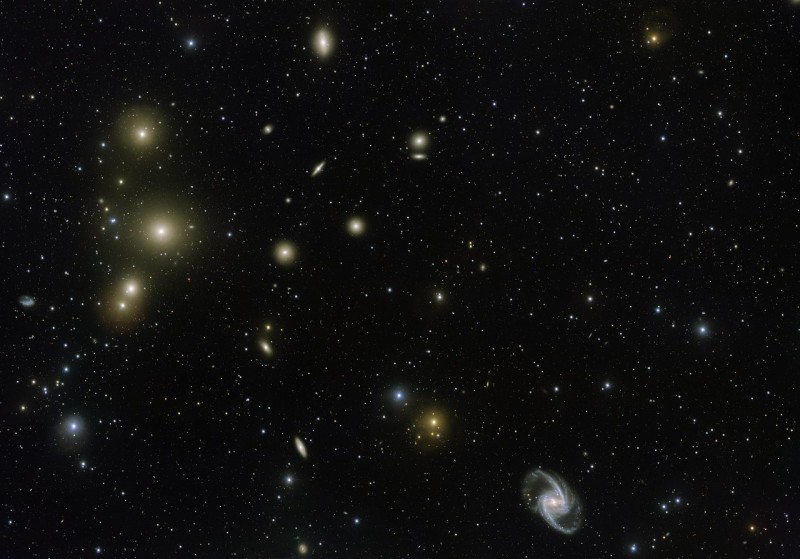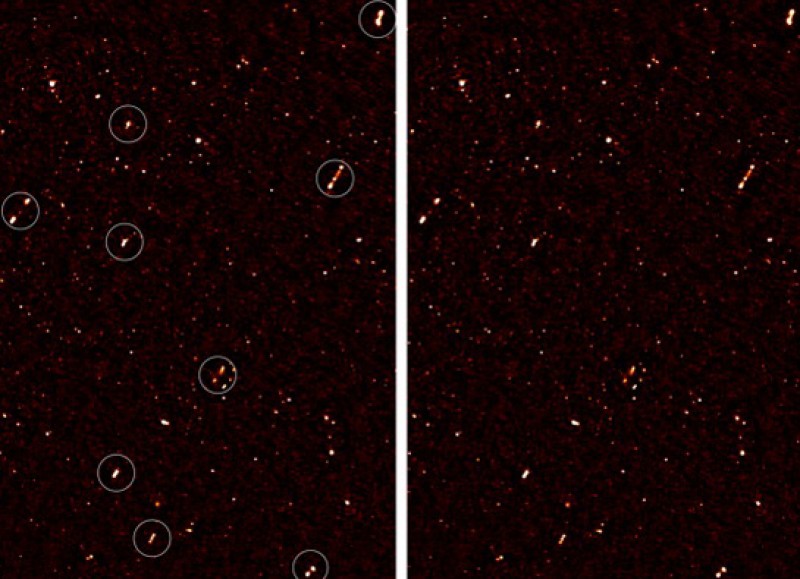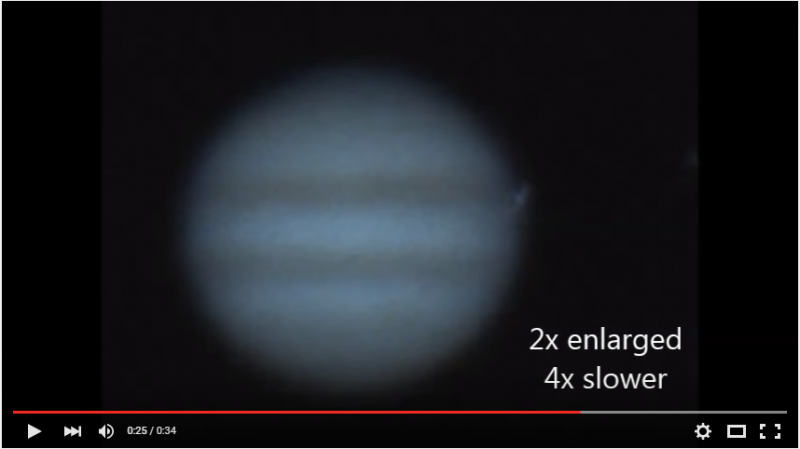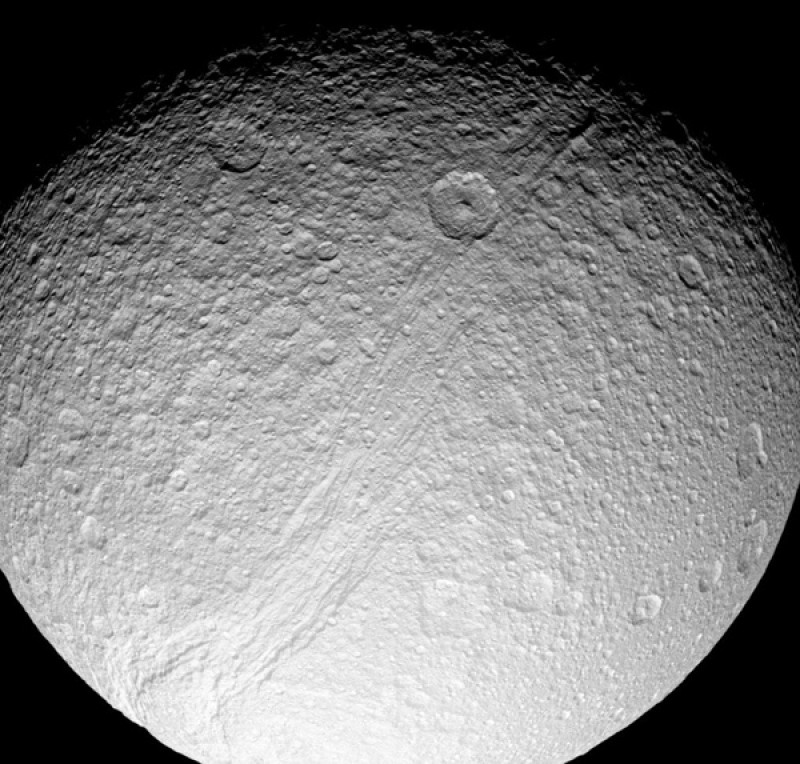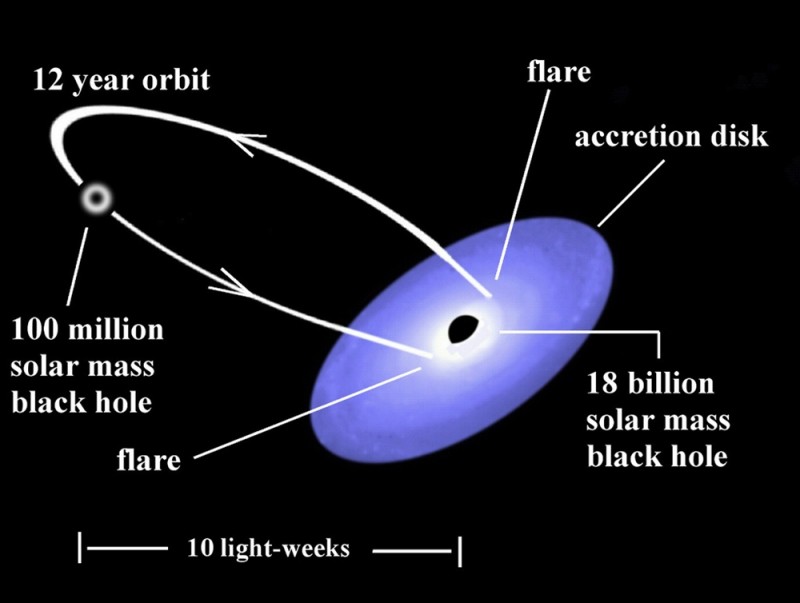Blog
Astrophysicists Find Triple Star System with 'Hot Jupiter'
Saturday, April 16th 2016 09:08 PM
Artist’s rendition of the view from a hypothetical moon in orbit around a three-star system. Credit: NASA/JPL-Caltech
Crisp, clear images of a "hot Jupiter" system captured by a University of Notre Dame physicist were vital in determining that a newly found planet inhabits a three-star system, a phenomenon documented only a few times before.
Justin R. Crepp, Freimann Assistant Professor of Physics, was part of the team that discovered KELT-4Ab, a so-called "hot Jupiter" because it is a gas giant that orbits extremely close to one of the stars in its solar system. The discovery was published in The Astronomical Journal.
While the KELT, or Kilodegree Extremely Little Telescope, detected the likely presence of the planet now called KELT-4Ab about 685 light years from Earth, Crepp was able to capture crisp, clear images of the system, discovering that the planet was in fact a member of a triple star system -- one of only a few found to date.
The KELT m...
Read More
Read More
Spectacular Concentration of Galaxies Known as the Fornax Cluster
Saturday, April 16th 2016 12:48 AM
This new image from the VLT Survey Telescope (VST) at ESO’s Paranal Observatory in Chile captures a spectacular concentration of galaxies known as the Fornax Cluster, which can be found in the southern hemisphere constellation of Fornax (The Furnace). The cluster plays host to a menagerie of galaxies of all shapes and sizes, some of which are hiding secrets.
Galaxies, it seems, are sociable animals and they like to gather together in large groups, known as clusters. Actually it's gravity that holds the galaxies in the cluster close together as a single entity, with the pull of gravity arising from large amounts of dark matter, as well as from the galaxies we can see. Clusters can contain anything between about 100 and 1000 galaxies and can be between about 5 and 30 million light-years across.
Galaxy clusters do not come in neatly defined shapes so it is difficult to determine exactly where they begin and end. However, astronomers have estimated that...
Read More
Read More
Cluster of Black Holes Found To Be Aligned
Tuesday, April 12th 2016 11:33 PM
An image of the deep radio map covering the ELAIS-N1 region, with aligned galaxy jets. The image on the left has white circles around the aligned galaxies; the image on the right is without the circles.
Russ Taylor
Deep radio imaging by researchers at the University of Cape Town (UCT) and University of the Western Cape (UWC) in South Africa has revealed that supermassive black holes in a region of the distant universe are all spinning out radio jets in the same direction — most likely a result of primordial mass fluctuations in the early universe.The new result is the discovery for the first time of an alignment of jets of galaxies over a large volume of space, a finding made possible by a three-year deep radio imaging survey of the radio waves coming from a region called ELAIS-N1 using the Giant Metrewave Radio Telescope (GMRT).The jets are produced by the supermassive black holes at the centers of these galaxies, and the only way for this...
Read More
Read More
Ranking Exoplanets By Their Potential For Life
Wednesday, April 6th 2016 07:57 PM
The Virtual Planetary Lab at the University of Washington has been working to rank exoplanets (or exoplanet candidates) by how likely they are to be habitable. (Rory Barnes/VPL)
Now that we know that there are billions and billions of planets beyond our solar system, and we even know where thousands of confirmed and candidate planets are located, how and where should we be looking for those planets most likely to be habitable? And, if we’re very smart and lucky in our searches, those most likely to actually support extraterrestrial life?
These quite new question have given rise to one of the more daunting and consequential efforts in the field: identifying and ranking the relative habitability of the most intriguing targets.
The first order answer to the question of where to look is, of course, in the habitable zone – those regions around a host star that would allow orbiting planets to have liquid water on the surface at least some of the time....
Read More
Read More
The Moon May Play a Major Role in Maintaining Earth's Magnetic Field
Tuesday, April 5th 2016 11:03 PM
The gravitational effects associated with the presence of the Moon and Sun cause cyclical deformation of the Earth's mantle and wobbles in its rotation axis. This mechanical forcing applied to the whole planet causes strong currents in the outer core, which is made up of a liquid iron alloy of very low viscosity. Such currents are enough to generate the Earth's magnetic field. © Julien Monteux and Denis Andrault.
The Earth's magnetic field permanently protects us from the charged particles and radiation that originate in the Sun. This shield is produced by the geodynamo, the rapid motion of huge quantities of liquid iron alloy in the Earth's outer core. To maintain this magnetic field until the present day, the classical model required the Earth's core to have cooled by around 3 000 °C over the past 4.3 billion years. Now, a team of researchers from CNRS and Université Blaise Pascal1 suggests that, on the contrary, i...
Read More
Read More
Amateur Video Captures Meteor On Jupiter
Tuesday, March 29th 2016 11:53 PM
Gerrit Kerbauer of Moedling, Austria captured a unique event on March 17th, 2016 while recording video of Jupiter. Though seeing conditions were not ideal, Gerrit was recording Jupiter with a Skywatcher Newton 200/1000. In doing so, he managed to capture what appears to be a brief, but significant meteor strike on the planet. He writes in his YouTube post, " The seeing was not the best, so i hesitated to process the Videos. Nevertheless 10 days later i looked through the Videos and i found this strange light spot that appeared for less than one second on the edge of the planetary disc. Thinking back to Shoemaker-Levy 9, my only explanation for this is an asteroid or comet that enters Jupiters high atmosphere and burned up/explode very fast.."
The event occurred at 00:18:33 UTC on March 17th. It was recorded with an Alccd5L-IIc camera on a Skywatcher Newton 200/1000 8" telescope at f/15 from Moedling, Austria. Moedling is just South West of Vienna.
...
Read More
Read More
Moons of Saturn May Be Younger Than The Dinosaurs
Saturday, March 26th 2016 12:51 AM
New research suggests that some of Saturn’s icy moons, as well as its famous rings, might be modern adornments. Their dramatic birth may have taken place a mere 100 million years ago, more recent than the reign of many dinosaurs.
The new paper finds that Saturn's moon Rhea and all other moons and rings closer to Saturn may be only 100 million years old. Outer satellites (not pictured here), including Saturn's largest moon Titan, are probably as old as the planet itself.
NASA/JPL
“Moons are always changing their orbits. That’s inevitable,” said Matija Cuk from the SETI Institute in Mountain View, California. “But that fact allows us to use computer simulations to tease out the history of Saturn’s inner moons. Doing so, we find that they were most likely born during the most recent two percent of the planet’s history.”While Saturn’s rings have been known since the 1600s, there’s still debate abou...
Read More
Read More
Caught For The First Time: The Early Flash Of An Exploding Star
Tuesday, March 22nd 2016 09:23 PM
The brilliant flash of an exploding star’s shockwave—what astronomers call the “shock breakout”—has been captured for the first time in the optical wavelength or visible light by NASA's planet-hunter, the Kepler space telescope.
An international science team led by Peter Garnavich, an astrophysics professor at the University of Notre Dame in Indiana, analyzed light captured by Kepler every 30 minutes over a three-year period from 500 distant galaxies, searching some 50 trillion stars. They were hunting for signs of massive stellar death explosions known as supernovae.
In 2011, two of these massive stars, called red supergiants, exploded while in Kepler’s view. The first behemoth, KSN 2011a, is nearly 300 times the size of our sun and a mere 700 million light years from Earth. The second, KSN 2011d, is roughly 500 times the size of our sun and around 1.2 billion light years away.
“To put their size into perspective, Earth's orbit about...
Read More
Read More
Hubble Unveils Monster Stars
Saturday, March 19th 2016 09:13 PM
Astronomers using the unique ultraviolet capabilities of the NASA/ESA Hubble Space Telescope have identified nine monster stars with masses over 100 times the mass of the Sun in the star cluster R136.
An international team of scientists using the NASA/ESA Hubble Space Telescope has combined images taken with the Wide Field Camera 3 (WFC3) with the unprecedented ultraviolet spatial resolution of the Space Telescope Imaging Spectrograph (STIS) to successfully dissect the young star cluster R136 in the ultraviolet for the first time. R136 was originally listed in a catalogue of the brightest stars in the Magellanic Clouds compiled at the Radcliffe Observatory in South Africa. It was separated into three components a, b, c at the European Southern Observatory, with R136a subsequently resolved into a group of eight stars (a1-a8) at ESO, and confirmed as a dense star cluster with the NASA/ESA Hubble Space Telescop...
Read More
Read More
Clocking the Rotation Rate of a Supermassive Black Hole
Friday, March 18th 2016 09:17 PM
An illustration of the binary black hole system in OJ287. The predictions of the model are verified by observations.
Gary Poyner, UK
A recent observational campaign involving more than two dozen optical telescopes and NASA’s space based SWIFT X-ray telescope allowed an international team of astronomers to measure accurately the rotational rate of one of the most massive black holes in the universe. The rotational rate of this massive black hole is one third of the maximum spin rate allowed in general relativity. This 18 billion solar mass heavy black hole powers a quasar called OJ287, which lies about 3.5 billion light-years away from Earth. Quasi-stellar radio sources or “quasars” are the bright centers of distant galaxies, which emit huge amounts of electro-magnetic radiation due to the infall of matter into their massive black holes. This quasar lies close to the apparent path of the Sun's motion on the celestial sphere...
Read More
Read More

